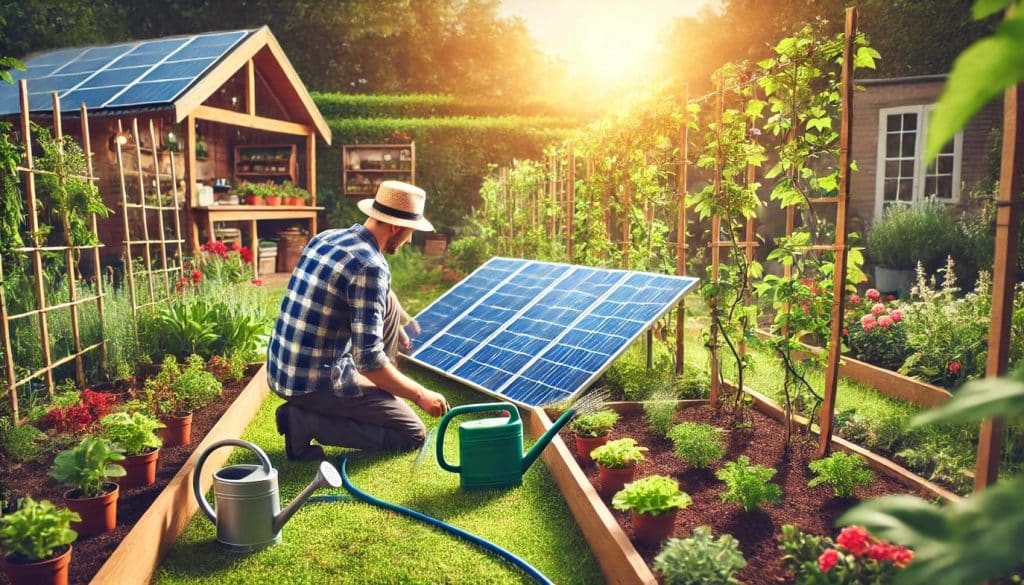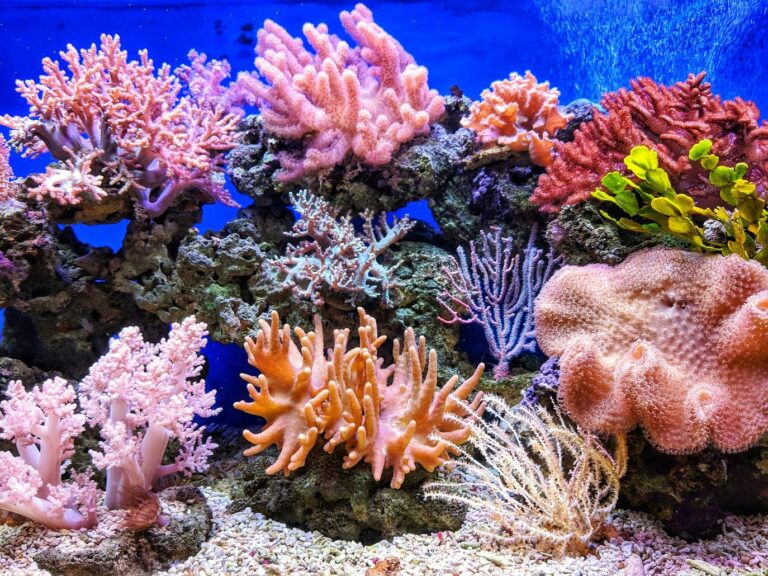Sustainability is now at the forefront of modern gardening, with solar technology providing innovative ways to enhance the efficiency and eco-friendliness of home gardens. Solar panels empower gardeners to operate irrigation systems, automate lighting, and control temperature—all without relying on standard electricity sources.
Taking a more renewable approach not only lowers energy expenses but also fosters a greener, self-sufficient gardening experience. As homeowners increasingly strive to minimize their carbon footprint and adopt renewable energy solutions, integrating solar power into gardening practices has become an intelligent and progressive choice.

Why Solar Panels Are a Game Changer for Home Gardens
Gardening often depends on electricity for irrigation, lighting, and other essential systems. Solar panels provide a renewable and cost-effective alternative, helping reduce reliance on the grid while lowering overall energy expenses. This is especially valuable for gardeners in remote areas where electrical access may be limited or unavailable.
Benefits of Using Solar Panels in Gardening Include:
- Lower energy costs by reducing dependence on traditional power sources, which can be particularly beneficial for those with extensive gardens requiring frequent irrigation or climate control.
- Sustainable gardening practices that decrease the carbon footprint and contribute to environmental conservation by utilizing clean energy.
- The ability to garden in remote areas without access to the electrical grid, making off-grid gardening more feasible and accessible.
- Increased resilience against power outages, ensuring that essential gardening systems, such as irrigation and lighting, remain functional even during disruptions.
- Minimal maintenance requirements, as solar panels generally have long lifespans and require only periodic cleaning to maintain efficiency.
Leveraging solar energy enables gardeners to create more sustainable and efficient outdoor spaces while cutting long-term operating costs. By harnessing the power of the sun, gardening practices transform, fostering a greener environment and optimizing resource use.
Growing Avocados with Solar-Powered Gardening
Avocados are surprisingly easy to grow at home, especially in warm climates or controlled environments like greenhouses. With well-draining soil, consistent watering, and plenty of sunlight, avocado trees can thrive with minimal maintenance. They are also self-pollinating in many cases, meaning a single tree can produce fruit, though multiple trees can increase yields and improve cross-pollination.
One of the most rewarding aspects of growing avocados at home is the opportunity to harvest them at peak ripeness. This timing guarantees a delightful balance of creaminess and flavor—qualities often missing in store-bought avocados. Many commercially sold avocados are picked too early, compromising their taste and texture. By cultivating them personally, gardeners can take control of the harvesting process, yielding fresher, more flavorful fruit that elevates every avocado dish.

Ways to Use Solar Panels in Your Garden
Solar technology can significantly enhance different facets of gardening. Here are several practical ways to seamlessly integrate it into your gardening routine:
Solar-Powered Irrigation Systems
Automated irrigation saves time and water by efficiently distributing moisture to plants. Solar-powered pumps can draw water from rain collection systems or wells, while smart sensors regulate watering based on soil conditions. This reduces water waste and ensures that plants receive the right amount of hydration without manual intervention.
Solar Grow Lights for Year-Round Gardening
In shaded areas or during winter, solar-powered LED grow lights provide the necessary spectrum for plant growth. These lights help ensure a consistent growing environment, even when natural sunlight is limited. By extending the growing season, gardeners can cultivate vegetables, herbs, and even tropical plants throughout the year.
Climate Control and Ventilation
Certain plants, such as avocado trees, require specific humidity and temperature levels. Solar panels can power ventilation fans, heating elements, or automated shading systems to maintain optimal conditions. Greenhouses equipped with solar-powered climate control systems can create a stable environment for delicate plants, reducing the risk of temperature fluctuations that could hinder growth.
Pest Control with Solar-Powered Devices
Garden pests can damage plants and reduce yields. Solar-powered repellents, ultrasonic deterrents, and bug zappers offer a chemical-free way to protect crops and keep gardens healthy. These devices work continuously throughout the day, capturing and storing energy for nighttime use. This guarantees consistent protection against pests, all without resorting to harmful pesticides.
Solar Garden Lights for Aesthetic Appeal
Solar-powered pathway lights, string lights, and lanterns enhance the look of a garden while improving nighttime visibility. These lights automatically charge during the day and illuminate outdoor spaces in the evening, providing both beauty and security. Utilizing solar energy allows homeowners to illuminate their gardens beautifully while keeping electricity bills in check.

How to Get Started with Solar Gardening
If you’re considering adding solar technology to your garden, follow these steps:
- Assess Your Energy Needs: Determine which garden features will benefit from solar power, such as irrigation, lighting, or climate control.
- Choose the Right Solar Panel System: Select panels based on the required power output, ensuring they can efficiently support your garden’s energy demands.
- Install Panels in Locations with Maximum Sunlight Exposure: Position panels where they receive direct sunlight for the majority of the day to optimize energy production.
- Invest in a Battery Storage System: Ensure continued operation during cloudy days or nighttime by storing excess solar energy for later use.
- Monitor and Maintain the System: Regularly check panels for dirt, debris, or shading that may reduce efficiency and clean them as needed.
By taking these steps, you can successfully integrate solar power into your gardening routine and maximize the benefits of renewable energy.
The Future of Solar-Powered Gardening
As solar technology advances, home gardening is becoming more self-sufficient. Innovations such as AI-powered irrigation, smart greenhouses, and agrivoltaic farming are making gardens more efficient and sustainable. These advancements allow gardeners to optimize plant growth, reduce waste, and enhance productivity while maintaining eco-friendly practices.
New battery technologies and improved solar panel efficiency are making solar gardening more accessible and cost-effective. As prices for solar components continue to decline, more homeowners will have the opportunity to embrace renewable energy solutions for their gardens.
Whether you are growing an avocado tree, managing a vegetable garden, or simply improving your outdoor space, solar-powered gardening provides a practical way to enhance sustainability and efficiency. By investing in solar energy, gardeners can create thriving, resilient growing spaces while contributing to a healthier planet.



